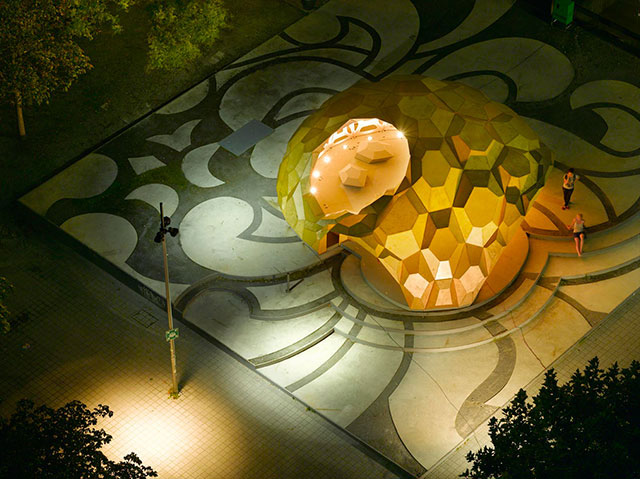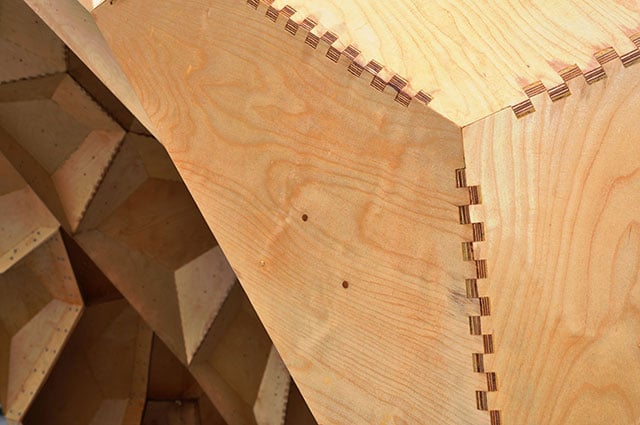02 December 2018
In 2010, the Institute for Computational Design (ICD) and the Institute of Building Structures and Structural Design (ITKE) designed and constructed a temporary research pavilion. The innovative structure demonstrates the latest developments in material-oriented computational design, simulation, and production processes in architecture. The result is a bending-active structure made entirely of extremely thin, elastically-bent plywood strips.

Material computes. Any material construct can be considered as resulting from a system of internal and external pressures and constraints. Its physical form is determined by these pressures. However, in architecture, digital design processes are rarely able to reflect these intricate relations. Whereas in the physical world material form is always inseparably connected to external forces, in the virtual processes of computational design form and force are usually treated as separate entities, as they are divided into processes of geometric form generation and subsequent simulation based on specific material properties. The strips are robotically manufactured as planar elements, and subsequently connected so that elastically bent and tensioned regions alternate along their length. The force that is locally stored in each bent region of the strip, and maintained by the corresponding tensioned region of the neighboring strip, greatly increases the structural capacity of the system.

In order to prevent local points of concentrated bending moments, the locations of the connection points between strips needs to change along the structure, resulting in 80 different strip patterns constructed from more than 500 geometrically unique parts. The combination of both the stored energy resulting from the elastic bending during the construction process and the morphological differentiation of the joint locations enables a very lightweight system. The entire structure, with a diameter of more than twelve meters, can be constructed using only 6.5 millimeter thin birch plywood sheets.
The computational design model is based on embedding the relevant material behavioral features in parametric principles. These parametric dependencies were defined through a large number of physical experiments focusing on the measurement of deflections of elastically bent thin plywood strips. Based on 6400 lines of code one integral computational process derives all relevant geometric information and directly outputs the data required for both the structural analysis model and the manufacturing with a 6-axis industrial robot. (Fabiana Cambiaso - Università La Sapienza) www.icd.uni-stuttgart.de www.itke.uni-stuttgart.de
Carlo Bardelli
Syncronia Magazine
Editore: Syncronia SRL - Via Enrico Morozzo della Rocca, 8 - 20123 Milano Tel. +39 02 36752 234 Fax: +39 02 36752 235
Proprietario: STRIM Holding SRL
Direttore: Marco Mignatti
Hosting: Aruba SPA





